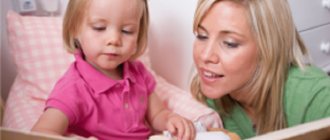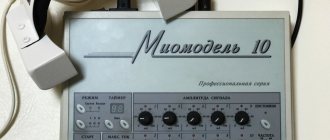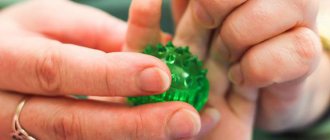At the preschool educational institution, we pay a lot of attention to the speech development of children. After all, speech is the basis for learning and education. Let's look at the stages of speech development in children from a very early age until the end of kindergarten. I'm sure many moments will surprise you.
Why know about the stages of speech development? If any deviations appear, it is extremely important to correct them in a timely manner. How a child speaks and understands what is said determines which school he will go to - a regular one or for children with speech problems. And this greatly affects his future. Therefore, at the preschool educational institution we do everything we can to correct speech in the right direction.
A child’s speech begins to develop long before he utters his first sounds. The most rapid development is from the end of the 1st year to 3 years. But first things first.
The main stages of speech development in the first 3 years of life
Doctors say that very young children speak the language of babies. And they do it the same way all over the world. I am not kidding. The first “words” of a baby’s language are body movements, facial expressions and crying. This is how the baby communicates his emotions and needs.
Until the age of 3, every child will do a tremendous amount of work. Children will speak their first real words at different ages. But there are certain stages that everyone goes through in the same sequence. And it’s worth paying attention to deviations and oddities. And don’t reassure yourself that “the neighbor started talking after 3, but now everything is fine.” Yes, everyone will talk. But how is another question.
So, the age stages of speech development in children are:
- 2-3 months. He hears the voice, reacts to the sound, and tries to produce the first sounds. The humming begins (pronounces vowels, sometimes together with “g”);
- 6 months. Makes sounds and pronounces syllables, begins to respond to the name;
- 7-9 months Babbling, sometimes persistent (“ma-ma-ma-ma”, etc.);
- 9 months. Understands simple words (“give”, “no”), uses many sounds and intonations;
- 12-18 months Many children consciously pronounce words (“mother”, “woman”, “kaka”) and understand simple addresses (“Please give me a toy”);
- 18 months Says a lot of simple words and tries to repeat the last syllables of complex ones. For example, he says “baka” instead of “dog”. This is fine;
- 24 months Links 2-3 words into simple sentences (“Let’s go there”, “Mom, give me”). An understanding of the abstract develops: the child understands that not only objects, but also concepts can be called words;
- 36 months Significant progress in vocabulary. The imagination develops, thanks to which the baby can talk about abstract things (“now, later”), navigate in space (“here, near”), and express emotions.
By the way, when a small child says a few words, he understands 10 times more. Says 2-3 words? Can understand 20-30. Some do it a year, others later.
Speech development in children
Often, modern parents spend a lot of time earning material wealth, leaving their child alone with an electronic gadget. Only a sensitive and attentive attitude towards your own child will stimulate his speech development.
Experts have developed recommendations for creating conditions conducive to successful speech development.
1. Creating a favorable speech environment
The speech environment is created by regularly reading books with the child, participating in joint story games, memorizing poems and rhymes, pronouncing tongue twisters, and stimulating the child to name various objects and actions. A calm, friendly atmosphere in the family, when parents talk calmly and cheerfully with each other, is of great importance.
2. Speaking out actions at an early stage to expand your vocabulary
While doing everyday things in the house, taking walks, visiting shops and other public places, you need to pronounce (comment on) the actions being performed.
An example of speaking while walking
“Look how the sun is shining. Go for a walk". “Here is a tree, look how beautiful the leaves are.” "Listen to the birds singing." “The dog has arrived. Beautiful dog. What does he say? That's right, aw-aw." “Let’s go to the store, buy bread and milk.”
An example of speaking during the game
“Let’s build a house out of blocks.” “Take the red and blue cubes.” “What kind of cubes are needed for the roof? Let's take the brown ones." “What kind of house will it be: big or small?” “I put the red die, and now you put the blue one.”
Other recommendations for accelerating the development of a child’s speech:
- Make sure that speech tasks meet the age characteristics and capabilities of the baby;
- talk to your child calmly, clearly, clearly and slowly;
- when pointing out errors, you cannot laugh or mock them; inaccuracies must be corrected as tactfully as possible;
- exclude lisp;
- Explain to your child the meaning of words unknown to him;
- ask questions, even if the baby cannot answer them yet;
- use facial expressions and gestures;
- tell stories;
- Learn songs with your child; singing develops the articulatory apparatus;
- Offer your child speech games: “Choose the right word”, “Find by color”, “Name it affectionately”.
Speech development is a complex and lengthy process, the foundation of which is laid at the stage of up to three years. In the future, the child’s vocabulary expands and grammatical structures become more complex, and monologue and dialogic speech skills develop.
What happens after 3 years
The child goes to kindergarten. By this point, he knows 250-700 words - a colossal number, right? A kindergartener constructs sentences of 5-8 words and completes tasks (“put this on your neck”). He also knows his name and understands short stories and fairy tales.
Then speech develops rapidly (although in everyday life we do not notice this). For example:
- 4 years. The child uses 1500-2000 words (more than some of us know from English). Uses prepositions and conjunctions, begins to pronounce hissing sounds correctly.
- 5 years. Vocabulary 2500-3000 words. Syllable rearrangements disappear from words. All parts of speech are used in sentences.
- 7 years. A preschool child uses up to 3,500 words, many of which are figurative. And he even uses fixed expressions (“without hind legs”, “by the sweat of his brow” - sometimes it’s very funny to hear).
By the preparatory group of a preschool educational institution, a preschooler develops memory, attention and logical thinking. He can himself, in a coherent speech, explain the meaning of any concept (“winter is when it’s cold and gets dark early”). The child has the prerequisites for successful schooling.
Speech development table for preschool teachers
Educators have to evaluate more complex speech indicators. Their characteristics are given in the table . The table of speech ontogenesis (development) was compiled based on the work of the famous linguist A.N. Gvozdev "Issues of studying children's speech." The table is actively used to assess the skills of children in preschool educational institutions.
In this article (below) there is a plate “Indicators of speech development”. This is also according to Gvozdev, only in a slightly modified and more understandable form. I’ll take the liberty of not repeating it here, but be sure to check it out. There is a breakdown by year and it is written down what a child should be able to do in phonetics, grammar, vocabulary and coherent speech. You can even print it out and hang it on the wall.
And a few more words. Speech development is a sign of the development of a child’s psyche. In the first years of life, the brain develops very intensively. The functions of the nervous system need to be trained, otherwise a delay may occur (and remain). The most critical time is the first three years. Did you not pay enough attention to your speech at this time? This means that it will take a lot of effort to catch up.
A child perceives his native speech well and masters it if his articulatory apparatus is trained. A child learns speech if he hears her words and repeats them.
The rule applies not only in kindergarten, but also in adulthood. For example, in order to give a good report at a conference, you need to practice delivering it. In order to correctly perceive and repeat speech, you need to perceive it well by ear. These relationships are very interesting. Let me draw an analogy: in order to master written speech, eye and hand movements must be practiced.
Dynamics of speech development of speech therapy center pupils
Dynamics of speech development of pupils of the preschool educational institution “Kindergarten No. 3” for September 2015 – 2016 academic year
Last name,
first name
Pronunciation
Phonemic awareness and sound analysis skills
Lexico-grammatical structure of speech
Result
Andrey
The mixture of soft and hard consonants and the softening of the sound [l] are preserved. The sound [r] is pronounced in combination with the sounds [t], [d]. The sound [w], [z] is not automated. The syllabic structure of the word is grossly violated. Inadequate substitutions of sounds and syllables are observed. Repeats backward and forward open syllables without consonant clusters and words with similar syllables.
Recognizes a sound against the background of a number of sounds, syllables, against the background of a word. Does not determine the place of a sound in a word. Incorrectly repeats syllable chains, violating the order of syllables.
Knows the most commonly used words in everyday life. Names animals, pieces of furniture, clothing, names of products. The dictionary has been replenished with words on the topics: “Animals”, “Furniture”, “Clothing”, “Shoes”, “Toys”.
Andrey
The sound [r] is not pronounced. Only soft
Vowel sounds are not added. Speech exhalation is weak and shortened. Pronounces sounds abruptly, vowels are not pronounced.
Recognizes a sound against the background of a number of sounds and syllables. Incorrectly repeats syllable chains, violating the order of syllables. Does not determine the place of a sound in a word.
The dictionary has been replenished with words on the topics: “School. School supplies”, “Animals”, “Furniture”, “Clothing”, “Shoes”, “Toys”.
Dima
The sounds [s], [z], [sh], [zh], [sch] in words are not automated. The sound [r] is pronounced, work on automation.
Recognizes the sound and points to it. Sound-letter analysis skills have not been developed. Does not determine the place of a sound in a word.
The dictionary has been replenished with words on the topics: “Animals”, “Furniture”, “Clothing”, “Shoes”, “Toys”.
Alexei
Gross violations of fine, articulatory motor skills. At rest, muscle tone is low, and when attempting to speak, there is a rapid and significant increase in muscle tone. In this case, an inconsistent nature of sound distortion is observed. He is able to pronounce isolated sounds more clearly. In spontaneous speech, hypertonicity increases and numerous distortions of sound pronunciation are observed. The sound [r] is pronounced in combination with the sounds [t], [d].
Recognizes a sound against the background of a number of sounds and syllables. Incorrectly repeats syllable chains, violating the order of syllables. Determines the first vowel sound at the beginning of a word. Does not determine the place of a sound in a word.
The dictionary has been replenished with words on the topics: “Animals”, “Furniture”, “Clothing”, “Shoes”, “Toys”.
Nastya
Violations of dynamic coordination of movements of the articulatory apparatus. The sound [r] is not automated. Diction is unclear. Violates the syllabic structure of polysyllabic words.
I began to recognize the sound against the background of a series of sounds.
Sound-letter analysis skills have not been developed.
The dictionary has been replenished with words on the topics: “Animals”, “Furniture”, “Clothing”, “Shoes”, “Toys”.
+
Nadia
Tongue movements are unclear and imprecise. The sounds [ts], [у] in coherent speech are not automated. Mixing sounds [r]-[l'], [s]-[w], [z]-[zh]. It disrupts the syllabic structure of polysyllabic words with a combination of consonants, mainly making the syllables similar.
Repeats syllable chains correctly. Recognizes a sound against the background of a number of sounds, syllables, against the background of a word. Does not determine the place of a sound in a word.
The dictionary has been replenished with words on the topics: “School. School supplies”, “Animals”, “Furniture”, “Clothing”, “Shoes”, “Toys”. Multiple agrammatisms.
Vadim
Tongue movements are unclear and imprecise. Impaired differentiation of lip and tongue movements. The softening of the sound [l] is maintained. In spontaneous speech, interdental pronunciation of sounds. The syllable structure in spontaneous speech is grossly disrupted. Has difficulty pronouncing words syllable by syllable. A mixture of whistling and hissing, [r]-[l] sounds.
Recognizes a sound against the background of a number of sounds and syllables. Over the summer I lost the ability to recognize sounds against the background of words. The skills of sound-letter word analysis have not been developed.
The dictionary has been replenished with words on the topics: “School. School supplies”, “Animals”, “Furniture”, “Clothing”, “Shoes”, “Toys”. Multiple agrammatisms. Based on the pictures, he makes up simple sentences of 2-3 words. Difficult to retell.
When composing a story, it distorts the meaning and leaves out important semantic links.
Yura
Disorders of differentiated movements of the lips and tongue. The mixture of sounds [r]-[l] is preserved. The syllable structure of polysyllabic, especially unfamiliar words is disrupted. In spontaneous speech, the syllabic structure of the word is grossly disrupted.
Recognizes a sound against the background of a number of sounds, syllables, against the background of a word. Incorrectly repeats syllable chains, violating the order of syllables. Does not determine the place of a sound in a word.
The dictionary has been replenished with words on the topics: “School. School supplies”, “Animals”, “Furniture”, “Clothing”, “Shoes”, “Toys”. The vocabulary is limited to everyday words.
Maksim
The sounds [l'], [r] in coherent speech are not automated. The sound [l] softens. Softens the sound [l]. The sound [ts] is pronounced as [s], and [h] as [t']. The sound [r] is not placed
Recognizes a sound against the background of a number of sounds, syllables and against the background of a word. Determines the first and last sound in a word. When repeating syllable chains, the sequence of syllables is disrupted. Does not determine the place of a sound in a word.
The dictionary has been replenished with words on the topics: “School. School supplies”, “Animals”, “Furniture”, “Clothing”, “Shoes”, “Toys”. Multiple agrammatisms.
Michael
The sounds [l], [ts], [ch], [sch] in coherent speech are not automated. Unclear diction. Tongue movements are imprecise and unclear. Nasal tone in the voice.
Recognizes a sound against the background of a number of sounds, syllables and against the background of a word. Determines the first and last sound in a word. When repeating syllable chains, the sequence of syllables is disrupted. Does not determine the place of a sound in a word.
The dictionary has been replenished with words on the topics: “School. School supplies”, “Animals”, “Furniture”, “Clothing”, “Shoes”, “Toys”. Multiple agrammatisms. The meaning of the picture when composing a story conveys correctly. In speech, he mainly uses one- and two-syllable sentences.
Egor
Under control, reflects and pronounces words clearly.
Recognizes a sound against the background of a number of sounds, syllables and against the background of a word. Determines the first vowel sound in a word.
Does not determine the place of a sound in a word.
The dictionary has been replenished with words on the topics: “Animals”, “Furniture”, “Clothing”, “Shoes”, “Toys”.
+
Dima
The sound [r] is not pronounced. The sounds [l], [l'] are placed approximately. Vowel sounds are not placed. Speech exhalation is weak and shortened. Pronounces sounds, syllables and words briefly, abruptly, vowels are not pronounced.
Recognizes a sound against the background of a number of sounds, syllables and against the background of a word. Determines the first and last sound in a word. When repeating syllable chains, the sequence of syllables is disrupted. Does not determine the place of a sound in a word.
The dictionary has been replenished with words on the topics: “Animals”, “Furniture”, “Clothing”, “Shoes”, “Toys”.
Chuprina
Kirill
The movements of the organs of articulation are sluggish, slow, and there is a prolonged search for a pose. The sounds [r], [l'] are not automated in coherent speech. The sound [l] began to soften over the summer. Speech is somewhat slow. In spontaneous speech there are isolated violations of the syllabic structure of polysyllabic words.
Phonemic hearing is developed. The skill of simple forms of sound-letter analysis has been developed. Can't think of a word for a given sound.
The dictionary has been replenished with words on the topics: “Wild animals”, “Domestic animals”, “Wild birds”, “Domestic birds”, “Trees”, “Seasons”. In speech there are various agramtisms, the agreement of words is often disturbed. Composes simple common sentences of 3 words and a story based on a series of plot pictures.
Dima
The tip of the tongue is not pronounced, the tongue is thick, moves with its entire mass. There is spasticity in the muscles of the tongue.
A mixture of whistling and hissing sounds. The sound [r] is pronounced in combination with the sounds [t], [d].
Cannot differentiate between hard and soft consonants. Does not hear disturbances in his own sound pronunciation. Uncritical of one's own speech. Does not strive to correct speech deficiencies. Determines the first and last sound in a word. Does not determine the place of a sound in a word. When repeating syllable chains, the sequence of syllables is disrupted.
Doesn't know some general words. The dictionary has been replenished with words on the topics: “Wild animals”, “Domestic animals”, “Wild birds”, “Domestic birds”, “Trees”, “Seasons”. There are multiple agrammatisms in speech, mainly control and coordination of words are impaired.
Egor
Movements of the organs of articulation are sluggish, slow, imprecise, and there is a long search for a pose. The sound [r] is pronounced in combination with the sounds [t], [d]. The sounds [ts], [l] in words and sentences are not automated.
Repeats syllable chains correctly. Recognizes a sound against the background of a number of sounds, syllables and against the background of a word. Determines the first sound in a word. Complex forms of sound-letter analysis have not been formed.
In speech there are agrammatisms, violations of word agreement, formation of plural nouns. h. Uses a simple, unexpanded phrase.
Lera
Softens the sound [l]. The sound [ts] is not automated. The sound [r] is not used. Numerous mixtures of whistling and hissing sounds.
Cannot differentiate between hard and soft consonants. Does not hear disturbances in his own sound pronunciation. Does not strive to correct speech deficiencies. When repeating syllable chains, the sequence of syllables is disrupted. Masters simple forms of sound-letter analysis.
In speech there are agrammatisms, mainly violations of coordination
When composing a story from pictures, it correctly conveys the meaning.
See you soon in articles on speech development!
Speech development is one of my favorite topics. Sometimes you have to stop yourself from writing 80 pages. I will draw a conclusion from today’s article: the better a child’s development of all types of speech, the better he will perceive information when learning. And the types of speech are colloquial, monologue, dialogic, internal, passive, etc.
So what are we doing? Let’s not be lazy and purposefully chat! With purpose and arrangement. Of course, silent children can also study well. For many silent, shy people, the main dialogues take place inside.
Diagnostics
It is best to begin work aimed at developing a child’s speech by diagnosing the current level of its development. This diagnosis is carried out by a speech therapist in close collaboration with a child psychologist and neurologist. Experts evaluate the child’s level of speech development, fine motor skills, and hearing. When assessing the level of speech development, the following criteria are taken into account:
- speech understanding;
- active vocabulary level;
- speech imitation;
- pronunciation of sounds, articulation;
- potential ability to form phrases and sentences of two words.






